Imagine this scenario: You're pumped up and pushing your limits during a workout, feeling like you're on top of the world. But suddenly, it hits you like a ton of bricks. Swelling, stiffness, and intense pain take over. Yep, you've got yourself a muscle strain.
And let me tell you, these sneaky injuries can happen in a split second but leave a lasting impact if not treated properly and promptly.
Don't worry, though! In this article, we'll dive deep into what muscle strains are, share effective ways and tips on how to speed up muscle strain recovery and give you the lowdown on how to protect your precious muscles for the long haul.
What are Muscle Strains?
Muscle strains, also known as pulled muscles, are injuries that occur when muscle fibers or tendons stretch or tear. They commonly occur as a result of overexertion, sudden movements, or improper use of muscles during physical activities.
When you strain a muscle, the affected area becomes painful, tender, and swollen. The severity can range from mild to severe, depending on how much damage has been done. In severe cases, the muscle may even tear partially or completely, leading to intense pain, bruising, and limited mobility.
Muscle strains are pretty common, especially among athletes. In fact, research shows that they account for about 10 to 55% of all acute sports injuries.
The Science Behind Muscle Strains
Now, let's dive into the science behind muscle strains.

Muscle strains occur when muscle fibers or tendons are subjected to excessive force or stretched beyond their normal limits. It all boils down to how muscles are structured and how they function. Muscles consist of bundles of individual muscle fibers made up of proteins called actin and myosin. These proteins work together to generate muscle contractions, allowing us to move and exert force.
When a muscle strain occurs, the force applied to the muscle exceeds its capacity to handle the load. As a result, damage occurs at the cellular level. Think of it like a tiny battle within your muscle fibers!
Research explains mainly three grades of muscle strains which are as follows:
- Grade 1: This is the mild strain stage which involves stretching or very minimal tearing of muscle fibers. This may cause minor pain, minimal loss of strength, and limited impact on mobility.
- Grade 2: This stage involves a moderate strain characterized by partial tearing of muscle fibers. This can cause more significant pain, a noticeable loss of strength, swelling, bruising, and restricted movement.
- Grade 3: This is the last stage where one experiences severe strain as the muscle fibers tear completely or rupture. This results in intense pain, significant loss of strength, extensive swelling, bruising, and severe limitations in movement. This condition requires immediate medical attention.
Causes of Muscle Strains
While muscle strain is a common occurrence for most people who work out, there are certain reasons why it happens and can cause health consequences.
- Overexertion: Pushing yourself too hard without giving your muscles enough time to rest can lead to strains. Performing activities that involve repetitive or prolonged muscle contractions can fatigue the muscles, making them more susceptible to injury.
- Sudden movements: Quick and forceful movements, especially without proper warm-up or conditioning, can strain your muscles. It's like giving them a shock they weren't prepared for!

- Poor flexibility: Limited flexibility in muscles and tendons increases the risk of strains. When your muscles and tendons aren't flexible enough, they struggle to accommodate sudden stretches and are more likely to get strained.
- Muscle imbalances: Having imbalances in muscle strength, where some muscles are stronger than others, can put uneven stress on your muscles. This imbalance makes them more prone to strains. It's like playing tug-of-war within your own body!
5 Ways to Speed Up Muscle Strain Recovery
Here are 5 effective ways for you to speed up your muscle strain recovery and hit the grind again!
1. Rest
Almost the toughest thing to do for a go-getter is simply rest. When a muscle is strained, it experiences microscopic tears in its fibers, resulting in pain, inflammation, and reduced function. To allow these tears to heal and the muscle to regain its strength, rest is essential.
When the muscle is at rest, it is not subjected to additional stress or strain, allowing the healing process to occur without interference. This is particularly important during the initial stages of recovery when the muscle is most vulnerable and sensitive. This can be done by avoiding intense strenuous activities.
Another fair point to resting when you have a muscle strain is that while resting, we conserve energy and redirect it toward the healing process for the muscles. This allows the body to enhance the speed and effectiveness of muscle strain recovery.
Moreover, rest promotes circulation and facilitates the delivery of nutrients and oxygen to the injured muscle. Resting allows the blood vessels to constrict and reduces blood flow to the injured area, minimizing swelling and promoting a more controlled healing response.
Additionally, resting also helps alleviate inflammation and swelling and relieves pain and discomfort. And not to mention, the mental and emotional trauma a muscle strain gives!
Well, resting helps you manage that as well. Taking time to rest not only allows the physical body to recover but also provides an opportunity for mental relaxation and rejuvenation. This mental break can be important for overall well-being and can contribute positively to the recovery process.


2. Ice Therapy
If you have ever come across injuries or burns or swelling, applying ice on it is like always on the top five list of solutions. Ice therapy, also known as cold therapy or cryotherapy involves the application of cold temperatures to the injured area, typically using ice packs or cold compresses.
Ice therapy primarily helps in reducing inflammation and any inflammatory responses associated with your muscle injury. When a muscle is strained, inflammation occurs as part of the body's natural response to injury. This inflammation leads to pain, swelling, and discomfort.
Applying ice to the affected area helps to constrict blood vessels, reducing blood flow and limiting the release of inflammatory substances.
In a way, ice therapy acts as a natural anti-inflammatory treatment that helps to prevent excessive swelling and reduce the risk of complications. Additionally, the cold temperature of the ice therapy also has a numbing effect on the nerve endings in the injured area. This numbing effect can help to temporarily reduce pain sensations, providing immediate relief and allowing for more comfortable movement during the early stages of recovery.
Furthermore, the ice also helps to reduce muscle stiffness and spasms, which helps in early flexibility and motion of the muscles, facilitating rehabilitation exercises, and promoting a faster return to normal activity.


3. Pain Medication
Sometimes, you need a little extra help to manage the pain. Pain medications like (NSAIDs) or analgesics, can help in the early recovery of muscle strains by providing relief from pain and discomfort.
Pain medications work by blocking pain signals or reducing inflammation, providing temporary relief, and also relieving pain.
NSAIDs in particular, help to reduce inflammation by inhibiting the production of prostaglandins, the inflammation-producing hormones or substances in the body. It's important to note that the use of NSAIDs should be under the guidance of a healthcare professional, as they can have potential side effects and interactions with other medications.
While pain medications do provide relief, it is important to use them judiciously and under medical supervision. Remember, medications are not the solutions of any health concern. They are intended for short-term use during the acute phase of muscle strain recovery. Prolonged or excessive use of pain medications can have potential side effects and may mask the body's natural warning signs, which can be harmful in the long run.


4. Gradual Return to Activity
Slow and steady wins the race!
When you take a prolonged rest, the body becomes used to it and thus, many people find it difficult to even start back to basics. That is why after a muscle strain, it is important to gradually reintroduce activities and exercises to avoid re-injury or setbacks.
The healing process of muscle strains involves the repair and regeneration of damaged muscle fibers. By gradually increasing the intensity and duration of activities, the muscle can adapt and strengthen over time. This approach helps prevent excessive stress on the healing muscle, reducing the risk of re-straining the injured area.
Moreover, when returning to physical activity too quickly or without proper progression, it is possible to overlook underlying weaknesses or imbalances in the muscles and surrounding structures.
As activities are gradually reintroduced, individuals can pay close attention to how their injured muscle responds. If any pain, discomfort, or swelling occurs, it may indicate that the muscle is not fully healed or is being overloaded. This feedback allows for adjustments to be made in terms of activity level, intensity, or duration to ensure that the muscle is given adequate time to recover.


5. Optimal Nutrition
The right nutrition, a balanced diet, and healthy food are literally the answer to recovering or repairing anything wrong with your body. Not even kidding, with the right nutrition, you can experience wonders in your physical and mental health. The same goes for muscle strains. How? Let's explore.
Proper nutrition provides the building blocks for tissue repair. Proteins are particularly important as they contain amino acids necessary for muscle recovery and growth. Amino acids are categorized into two types: essential and non-essential amino acids. Consuming an adequate amount of high-quality protein supports the synthesis of new proteins, which aids in repairing damaged muscle fibers. This can include protein sources like poultry, fish, chicken, etc. in the diet that can help meet these requirements. If you are vegetarian, sprouts, lentils, soybeans, beans, tofu, etc. are to the rescue!
Additionally, to facilitate quick muscle strain recovery, try to include foods that are rich in vitamins and minerals in your diet, especially vitamin C, vitamin E, zinc, and magnesium.
These play an important role in collagen synthesis, antioxidant function, and immune support. Collagen is a crucial component of connective tissues, including tendons and ligaments, which are often affected by muscle strains.
Go for greens and fruits! The US Department of Agriculture’s MyPlate program recommends making half your plate fruits and vegetables. The American Heart Association (AHA) recommends four to five servings of fruits and vegetables daily.


How Long Do Strained Muscles Take to Heal?
The healing time for strained muscles can vary depending on the severity of the strain, individual factors, and the specific muscle involved. In general, mild to moderate muscle strains can take anywhere from a few days to a few weeks to heal, while more severe strains may take several weeks or even months to fully recover.
Here is a general timeline for muscle strain healing:
- So, mild muscle strains, which are the Grade 1 muscle strains, typically involve minimal damage to the muscle fibers. So, you can expect a decent recovery within 1 to 3 weeks with proper rest and self-care measures.
- Moderate muscle strains that involve partial tearing of muscle fibers can take anywhere from 3 to 8 weeks to heal. However, it is also dependent on how quick you are in adapting the right measures and practices to improve the healing process.
- Severe muscle strains almost or completely damage your muscle fibers. It can take a considerably long time to heal such stains, let's say several weeks to months, and a full recovery may require more extensive rehabilitation, including physical therapy and possibly surgical intervention.
All these estimates are general and an average of what has been studied and researched for years. Individual healing times may vary. Factors such as age, overall health, adherence to treatment and rehabilitation, and the presence of any underlying conditions can affect the recovery process.


How to Prevent Pulled Muscles?
- Warm-up: Always warm up before diving into physical activities. It gets your blood flowing, improves flexibility, and prepares your muscles for action. Think of it as a gentle invitation to your muscles, like a warm hug before the real work begins!
- Stretch: Make stretching a part of your routine. Regular stretching improves muscle flexibility and reduces the risk of strains. Embrace both static and dynamic stretches, focusing on major muscle groups. It's like giving your muscles a little morning stretch to wake them up!
- Use Proper Technique: Learn and use the correct technique for any physical activity or exercise. This helps ensure that your muscles are working efficiently and reduces the risk of strains. Remember, practice makes perfect!
- Strength and Conditioning: Strength training is your best friend! Incorporate exercises that target all major muscle groups to develop overall strength. Balanced muscle development helps your muscles handle the demands of physical activity like a pro.
- Proper Equipment and Gear: Give your muscles the support they need. Wear appropriate footwear and use proper equipment for your chosen activity. Good shoes provide support and cushioning, reducing strain on your muscles and joints. Protective gear, such as helmets or padding, should be worn for activities with a risk of impact or injury. Safety first!
- Listen to Your Body: Your body is a fantastic communicator. Pay attention to the signals it sends you. If you feel any unusual sensations or pain, take a step back and assess the situation. Your body knows best, so trust it!
Takeaways

Muscle strains may hit hard and fast, but with the right approach, you can speed up your recovery and bounce back stronger. Remember to rest, use ice therapy, compress and elevate, manage pain if needed, engage in physical therapy, gradually return to activity, and nourish your
Stay strong, take care of yourself, and get back in the game stronger than ever!
Frequently Asked Questions
Should I stretch the injured muscle?
It's generally advised to avoid stretching the injured muscle initially, as it can further aggravate the strain. Focus on rest and gentle movements, and consult with a healthcare professional for specific guidance.
Can I use foam rolling to help with muscle strain recovery?
Foam rolling can be beneficial for muscle recovery, but it's important to avoid rolling directly on the injured area. Focus on the surrounding muscles and seek guidance from a healthcare professional or physical therapist.
Can I use over-the-counter creams or ointments for muscle strain?
Over-the-counter topical creams or ointments may provide temporary pain relief, but they do not directly speed up the healing process.
Can I use heat packs instead of ice for a muscle strain?
Ice therapy is generally recommended during the initial acute phase to reduce inflammation. Heat therapy, in the form of warm compresses or heat packs, is typically used after the acute phase to promote blood flow and relaxation.
Can I resume sports or strenuous activities once the pain subsides?
Pain relief is not always an indicator of full recovery. It's important to gradually reintroduce activities, following the guidance of a healthcare professional, to ensure the muscle is adequately healed and prevent re-injury.





















